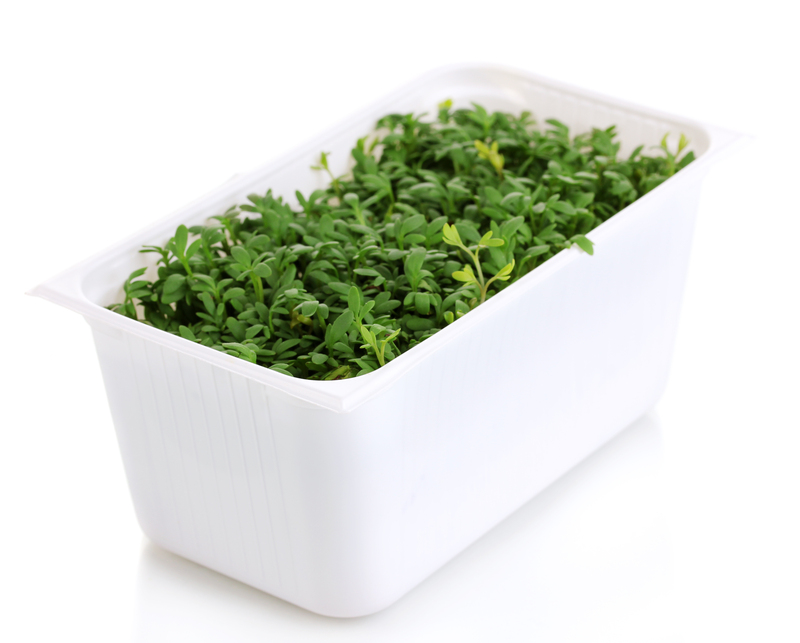The Art and Science of Recycling Old Cookware
Recycling old cookware is a rising trend among eco-conscious homeowners, sustainability enthusiasts, and anyone looking to declutter their kitchens responsibly. As our awareness about environmental issues increases, so does our need to find effective ways to manage kitchenware waste. Many don't realize that the pots and pans they discard could enjoy a second life. From minimizing landfill impact to turning old cookware into creative art projects, the possibilities are endless. In this comprehensive guide, we will explore the art and science behind recycling your old pots, pans, and utensils, including practical tips, environmental benefits, and inspiring project ideas.

Understanding the Need: Why Recycle Old Cookware?
Before we explore the how-to of repurposing and recycling cookware, it's important to understand why this practice is crucial. Kitchenware makes up a significant portion of household waste, especially as trends shift and nonstick pans lose their coatings or pots become warped. With millions of utensils sold annually, the environmental footprint is massive when these items end up in landfills.
Environmental Impact of Discarded Cookware
- Longevity of Materials: Metals and plastics in cookware can take hundreds of years to decompose.
- Resource Depletion: Manufacturing new cookware requires mining, refining, and energy-intensive processes, all of which deplete natural resources.
- Pollution: Old nonstick coatings, such as Teflon, can leach harmful chemicals if not disposed of properly, risking soil and water contamination.
Recycling old pots and pans isn't just about waste management--it's about giving materials a new lease on life while reducing pollution and conserving resources.
What Types of Cookware Can Be Recycled?
The first step in the science of recycling cookware is knowing what can and can't be recycled. Not every municipal recycling program accepts cookware, but many items are recyclable through scrap yards, donations, or creative upcycling.
Common Recyclable Cookware Materials
- Stainless Steel: Highly prized for recycling due to its durability and value as scrap metal.
- Cast Iron: Often accepted by metal recyclers or rejuvenated for continued use.
- Aluminum: Lightweight pans and pots can be recycled, though handles may need to be removed.
- Copper: Typically found in premium cookware, copper fetches a high price at scrap yards.
- Enamel-coated Cookware: Usually recyclable if the coating is free from harmful chemicals.
Non-Recyclable Cookware Elements
- Nonstick Pans with Teflon: These require special handling as Teflon can be toxic if burned.
- Ceramic-coated Pans: Some recycling centers will not accept ceramics mixed with metals.
- Plastic Handles and Lids: Usually need to be removed as most facilities only accept the metal portion.
Tip: Always check with your local recycling center before dropping off cookware. Regulations vary based on region and material.
How Is Old Cookware Recycled?
The process of recycling kitchenware often involves several steps designed to extract and repurpose valuable materials while minimizing contamination. Here's how it works:
Step 1: Sorting and Separation
Recycling centers sort kitchenware by material type. Non-metal parts like handles or lids are separated for proper disposal or different recycling streams.
Step 2: Cleaning and Preparation
Any food residues, oils, or non-metal components are thoroughly cleaned from the cookware. This ensures high-quality recyclable material.
Step 3: Shredding and Crushing
Cookware is fed into industrial shredders that reduce it to small, manageable pieces, suitable for melting and reforming.
Step 4: Melting and Recasting
The shredded metals are melted down in a furnace and recast into new products--from construction materials to new kitchenware.
Fun fact: Recycled metals require up to 95% less energy compared to producing virgin metals from ore!
The Artistic Side: Creative Ways to Repurpose Old Cookware
Not all old cookware needs to follow a conventional recycling route. For those with a creative flair, cookware can take on surprising new roles as home decor, garden art, or functional household items. Here are some inspiring ideas for upcycling your old pots and pans:
- Planters: Holes can be drilled in metal pots to turn them into quirky flowerpots or herb planters.
- Garden Bells: Upside-down pans and lids make charming bells for the garden when attached with a bit of wire and a clapper.
- Wall Art: Arrange old baking trays and pans in patterns on a kitchen wall for an industrial-chic look.
- Clocks: Transform a nonstick pan into a functional and unique kitchen clock with a simple clock kit.
- Bird Baths: Large metal or enamel bowls can become beautiful bird baths for your backyard.
- Organizers: Use muffin tins or cake pans as desktop organizers for small items, from paper clips to jewelry.
Tip: With a bit of imagination and DIY spirit, your old kitchenware can serve for decades--just in a different form!
Where and How to Recycle Old Cookware
Now that you're motivated to dispose of your cookware responsibly, where can you actually recycle it? Here are practical steps for finding the right recyclers and maximizing your environmental impact:
1. Municipal Recycling Programs
Some city recycling services accept metal kitchenware, especially if it's all-metal. Contact your local waste authority to check their specific rules for recycling cookware.
2. Scrap Metal Yards
Scrap yards are an excellent option for recycling metals like steel, iron, aluminum, and copper. These facilities often pay by the pound, adding monetary incentive for dropping off old kitchenware.
3. Retailer Take-Back Programs
Some major retailers or kitchenware brands offer take-back or trade-in programs for old pots and pans when you purchase new ones. Inquire at the point of sale for such incentives.
4. Donation Centers
If your cookware still has life in it, consider donating to shelters, soup kitchens, or thrift stores. Many organizations will gladly accept gently used cookware, especially if it's still functional.
5. Specialized Recycling Facilities
In regions with advanced recycling infrastructure, specialized centers can handle cookware, including those with difficult materials or coatings. Search online for metal recycling or hazardous waste facilities in your area.
Best Practices for Responsible Cookware Disposal and Recycling
To make the most out of recycling your used kitchenware or upcycling your old pots and pans, follow these best practices:
- Remove Non-Metal Parts: Detach handles, knobs, or plastic bits before dropping off metal pans.
- Clean Your Cookware: Remove food residues and oils to prevent contamination during the recycling process.
- Check Acceptable Materials: Be sure to recycle only those items that your local center accepts--some do not process ceramics or coated metals.
- Be Informed About Nonstick Coatings: If your pan has a nonstick finish, contact recyclers to see if they accept such items. Some require special handling.
- Repurpose First, Recycle Last: If your pots and pans can be used by someone else, donate before sending to the recycling plant.
By following these simple steps, you'll minimize your environmental impact and possibly inspire others to rethink their approach to kitchen waste!
Benefits of Recycling Old Cookware
Why go through the effort of recycling or upcycling your old kitchenware? The benefits go far beyond simply clearing out your cabinets:
- Conserves Natural Resources: Recycling metals means fewer raw materials are mined, preserving natural landscapes and resources.
- Reduces Energy Usage: Upcycling and recycling require far less energy than manufacturing from scratch.
- Cuts Down Landfill Overflow: Our landfills are overflowing. Recycling cookware keeps bulky metal items out of landfill sites.
- Supports Local Charities: Donating usable cookware helps community organizations serve those in need.
- Encourages Creativity: Repurposing old kitchenware into art and decor fosters imagination and crafty reuse.
- Promotes a Circular Economy: Every piece of recycled cookware helps move us from a 'throwaway society' to one where materials are valued and reused.
Frequently Asked Questions: Recycling Kitchenware
Q: Can nonstick pans be recycled?
A: Some recycling centers will take nonstick pans if the Teflon coating is removed. Others treat Teflon as hazardous waste and require special handling. Always ask your local center first.
Q: What should I do with broken glass lids?
A: Tempered glass often used for lids isn't accepted in curbside recycling. Some scrap yards may take it, but check their policies. Otherwise, upcycling or donating is best if the lid isn't cracked.
Q: How do I upcycle cookware safely?
A: Sand down sharp edges, wash all items thoroughly, and avoid using pots or pans with flaking coatings for food-related projects.

The Future of Sustainable Cookware Disposal
As more people embrace the science and art of recycling old cookware, manufacturers are responding by designing with disassembly and recyclability in mind. Look for cookware that advertises eco-friendliness, modular parts, or "take back" programs. Your purchasing choices today shape the waste stream of tomorrow.
Conclusion: Make Every Pan Count
Recycling or upcycling old cookware is not just about decluttering; it's a small yet powerful way to contribute to a healthier planet. Whether you're melting down a battered cast iron skillet, transforming a scratched aluminum pan into a garden bell, or passing on your gently used pots to a local charity, your choices matter. The intersection of art and science in repurposing cookware demonstrates that sustainability can be both practical and beautifully creative.
Next time you clean out your kitchen, think twice before tossing those pots and pans. Instead, embrace the art and science of recycling, repurposing, and reimagining old cookware for a greener, more inventive world.